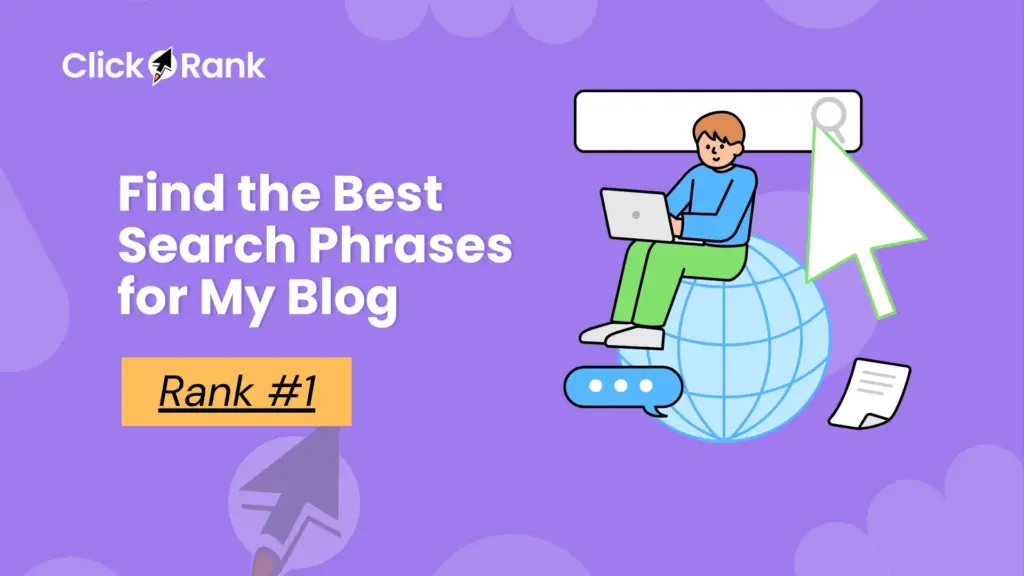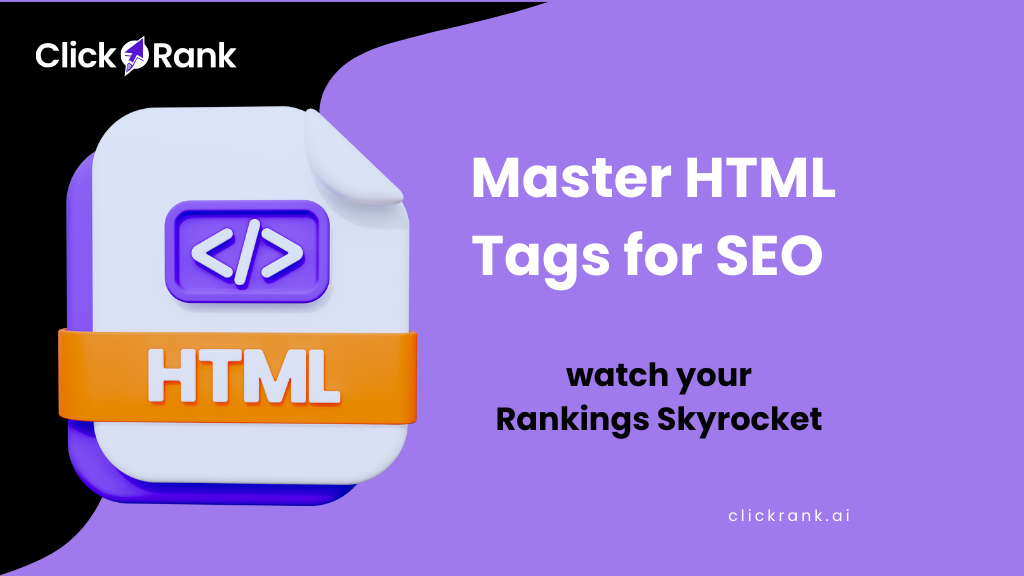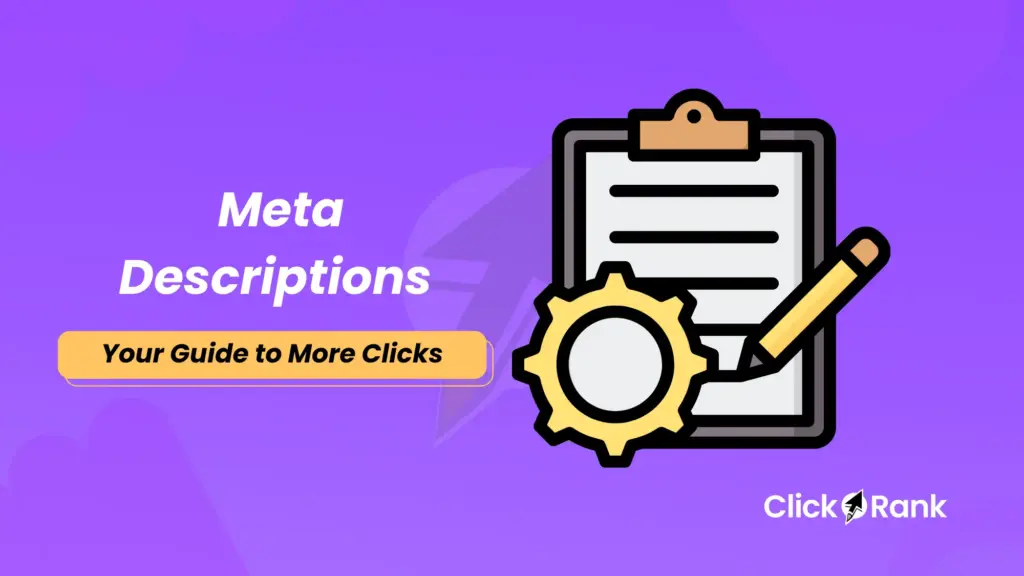It sounds like you’re wrestling with your blog’s performance, right? It’s a truly frustrating moment when you pour your heart into a post, but it just sits unseen on page five. I totally get that feeling of doubt and worry about your hard work being missed by Google! But don’t stress the real issue isn’t your writing.
It’s likely a tricky issue with your SEO keywords and blog keyword strategy. That’s where we, at ClickRank, step in to help you fix this mess, save you hours of manual Keyword Research, and get your valuable content in front of the right readers.
What Are Search Engine Optimization Terms and Why Do They Matter to Your Blog Keyword Strategy?
It’s truly frustrating when your hard work goes unseen. We’ll show you how the right focus terms connect your valuable content to the people who are searching for it.
Definition: More Than Just Words People Type?
It’s an amazing feeling when a search engine actually understands what your post is about, isn’t it? Search Engine Optimization (SEO) terms are the language bridge connecting your amazing content to someone’s question online; they are the specific phrases potential customers use to find information, products, or services. These terms are vital because they tell search engines like Google and Bing what your page is most relevant for, making sure you show up in the right place.
The Core Purpose: Why These Terms Drive Targeted Traffic
I used to feel so lost with my traffic, but I realized these terms are the map! The core purpose of a strong blog keyword strategy is driving targeted traffic people who are genuinely interested in your topic. When we carefully choose the right terms, we focus on capturing a specific User Intent, which means the people landing on your page are highly likely to read, engage, or even convert.
How These Focus Terms Directly Influence Content Marketing Success
It makes me so happy to see my work actually pay off, and your content deserves that! A focused Content Marketing plan absolutely relies on these terms because they dictate your entire strategy, ensuring every piece you create contributes to your Topical Authority. They are the foundation of effective Information Retrieval, ensuring that search bots and AI models like Gemini and ChatGPT can easily understand, integrate, and share the value you provide.
Mastering User Intent: The Secret to High-Converting Search Phrases
Stop wasting time writing for the wrong people! Learn the three types of intent and why focusing on specific, longer phrases brings the best results.
Understanding the 3 Types of Search Intent (Navigational, Informational, Transactional)
Don’t you just hate writing for the wrong audience? To truly shine, we must understand why someone is searching:
- Informational Keywords: The user wants to learn (e.g., “what is a title tag?”).
- Navigational Keywords: The user wants to go to a specific site or page (e.g., “ClickRank login”).
- Transactional Keywords: The user wants to buy or take action (e.g., “buy SEO audit tool”). Focusing on this intent ensures your content directly answers their need, which gives me so much confidence in its potential to rank!
Short-Tail vs. Long-Tail: Which Phrases Bring the Best Results?
Sometimes the shortest path isn’t the best one, right? Short-Tail (Head) Keywords (1-2 words) have huge Search Volume but tough Blog Keyword Strategy Difficulty (KD); they make me feel overwhelmed. But Long-Tail Keywords (3+ words) are incredibly valuable because they reflect specific user questions and convert at a much higher rate. They are a smart target for any effective Blog Keyword Strategy.
Why Ignoring High Search Volume Can Be Your Best Strategy
It’s tempting to chase massive numbers, but trust me, it’s often a trap that leads to frustration! A brilliant Content Creation plan often chooses terms with lower Search Volume but high relevance and lower Keyword Difficulty. This strategic choice lets us outrank the giants and quickly capture traffic from people whose intent perfectly matches our content.
How Do I Find the Best Search Phrases for My Blog? The Research Process
I used to spend hours digging, but I’ve found a system that works! Follow this practical, step-by-step guide to uncover the high-value terms your competitors are missing.

Step-by-Step Blog Keyword Strategy Research: A Practical Guide
I used to spend hours digging, but I’ve found a system that works! To start your Blog Keyword Strategy Research, begin with broad Seed Keywords that define your business, like “SEO platform.” Then, look at Google’s “People also ask” section for related ideas, and organize your list by User Intent. ClickRank Audit can then connect to your data and show you exactly what terms are already sending you traffic!
Using Free and Paid Blog Keyword Strategy Research Tools Effectively
It’s so relieving to have tools that do the heavy lifting! You can use free tools like Google Keyword Planner to get basic search estimates, but professional tools like Ahrefs or SEMrush provide crucial details like Keyword Difficulty and advanced Competitor Analysis. These insights are the foundation of an effective Blog Keyword Strategy that stands up to all search engines and their bots in on page seo.
Spying on Success: Conducting Competitive Blog Keyword Strategy Analysis
I always feel like I’ve found a secret advantage when I do this! Competitor Analysis is simply looking at what terms your high-ranking rivals are using. You want to see what pages they rank for and how you can create even better content that directly targets the same valuable Long-Tail Keywords and captures the same high-value Transactional Keywords.
Analyzing Blog Keyword Strategy Metrics: Search Volume, Difficulty, and CPC
Don’t let these numbers scare you; they are your friends! We analyze Search Volume (how many people search for it), Keyword Difficulty (how hard it is to rank), and CPC (cost per click, which signals commercial value). For the best results, ClickRank’s Smart Recommendations prioritize high-value fixes based on these precise performance metrics, which is a massive time-saver for me!
Building Your Blog Keyword Strategy: From List to High-Ranking Content
A list of terms isn’t a strategy! Learn how to map, cluster, and prioritize your keywords to build authority and ensure every blog post is a ranking success.
Keyword Mapping: Assigning Topics to Specific Blog Posts
Feeling organized is a huge boost to my confidence! Keyword Mapping is the process of assigning your carefully researched terms to specific pieces of content. This step is critical to a good Blog Keyword Strategy because it prevents two of your own pages from fighting for the same term a problem we call Keyword Cannibalization.
Creating Content Clusters: Targeting Related Keywords for Authority
It’s wonderful to be seen as the ultimate expert! Content Clusters are a powerful way to build Topical Authority by covering a major subject area completely with a central “pillar” page and several supporting articles linked to it. This structural approach is fantastic for On-Page SEO and helps search engines confidently rank your pages.
Prioritization: Which Keywords Should You Target First?
I used to worry about where to even begin! Effective Keyword Prioritization means tackling terms that have a decent Search Volume, lower-than-average Keyword Difficulty, and a clear path to conversion first. Focus on the low-hanging fruit—terms where you can win quickly—and ClickRank’s Smart Recommendations can show you exactly which ones to fix for the fastest results.
Applying Keywords: Perfecting Your On-Page SEO Elements
Don’t miss these easy wins! We’ll show you exactly where to place your target phrases in your title, headings, and descriptions for maximum ranking power.
The Best Placement: Optimizing Your Title Tags and H1 Headings
This is where your content truly speaks to the search engine! Your Title Tags and H1 Headings are the two most important places to use your target phrases, as they are the first thing Google’s bots see. Using phrases here clearly signals what your post is about, and ClickRank’s One-Click Fixes can automate this process across your site for instant On-Page SEO improvement.
Using Keywords in Your Meta Descriptions to Increase Clicks
It makes me so happy when I see a higher Click-Through Rate (CTR)! Although the Meta Descriptions don’t directly influence rankings, they are your sales pitch on the SERP. Using your target phrases here—along with a strong call to action encourages users to choose your link over the competition’s.
Strategic Use: Inserting Keywords Naturally in Your Body Content and Subheadings
The key is to keep it sounding totally natural and helpful, which is sometimes tough. We want to use our related SEO Blog Keyword Strategy in the Body Content and Subheadings to provide context and value. Remember to focus on semantic richness and answering the user’s question completely, which is what all modern search engines and AI models love.
Quick Tips for Optimizing Image Alt Text and URL Slugs
These little details can make a big difference in how easily you are found! Always try to include a relevant, descriptive phrase in your URL Slugs (like /blog-keyword-strategy-guide) and in your Image Alt Text to help with accessibility and overall Information Retrieval.
Troubleshooting: Common Keyword Mistakes and How to Fix Them
Feeling frustrated because you’re not ranking? Find out the common errors that hurt your site, like cannibalization, and how to fix them immediately.
How Do I Avoid the Google Penalty of Keyword Stuffing?
I always worry about getting a Google Penalty, but avoiding it is simpler than you think! Keyword Stuffing—the act of unnaturally forcing too many phrases into your text—will hurt your rankings. We must focus on clarity and fact density instead, ensuring our content is useful to the human reader first.
Fixing Keyword Cannibalization: Why Are My Pages Fighting Each Other?
It’s so confusing when two of my pages show up for the same search! Keyword Cannibalization happens when multiple pages target the same terms, confusing search engines. To fix it, you need to use ClickRank Audit to identify the conflicting pages, and then use your Keyword Mapping to consolidate, redirect, or simply refocus the content.
Why Is My Blog Post Not Ranking? Diagnosing Keyword Implementation Errors
It can be so discouraging when you’ve done everything right but still don’t rank. Common errors include poor keyword-to-intent matching, failing to address the topic fully, or just not having enough Topical Authority. Our On-Page Optimization tool can automatically check your alignment and suggest prioritized, actionable fixes based on real-world performance data.
Are Keywords Still Important for SEO in an Entity-Based World?
Absolutely, I feel confident saying they are! Even with search engines focusing on Entities , you still need terms to connect to those entities. Terms like Long-Tail Keywords are more important than ever because they provide the crucial context for search engines to match your content to the user's complex need.
What is the Ideal Keyword Density for a Blog Post?
I want to relieve your stress: there is no single idealdensity. Forget about trying to hit a specific percentage; what matters is how naturally and thoroughly you cover the topic. Focus on semantic richness, using a variety of related SEO Keywords, and providing unique value, which makes your content easy for AI models to understand and integrate.
How Often Should I Update My Keyword List?
I recommend reviewing your list every 3 to 6 months to maintain your edge. The market changes so fast that your Blog Keyword Strategy needs to be a living document! Use your performance data, conduct fresh Competitor Analysis, and make adjustments to your Keyword Prioritization to stay ahead of the game.


